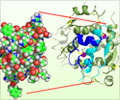Treatment approaches using mature human induced pluripotent stem cells (hiPSCs) could help better vascular health complications from type 2 diabetes.

‘According to the U.S. Centers for Disease Control and Prevention, more than 37 million people in the United States have diabetes–more than 11 percent of the U.S. population. What’s more, diabetes-related complications have risen among both young adults ages 18 to 44 years of age and adults ages 45 to 64. These complications cause major metabolic disturbances that damage the cardiovascular, visual, peripheral nerve and renal systems through harming small and large microvessels that feed these tissues.’





In the multi-site, early phase study recently published in Science Advances, investigators genetically reprogrammed diabetic and non-diabetic peripheral blood cells into hiPSCs and matured the cells into special blood vessel reparative cells. Upon injection into animal models with type 2 diabetic murine (T2D) retinal dysfunction, results showed significant improvement in visual acuity and electroretinograms with restoration of vascular perfusion. They hypothesized hiPSC-derived vascular reparative cells may serve as a source of endothelial precursors that will display in vivo vessel reparative properties in these diabetic subjects. “Unlike the use of embryonic stem cells (ESCs), genetically engineered hiPSCs do not carry the ethical challenges ESCs possess that limit their possible usage, and hiPSCs are being increasingly recognized as a viable alternative in study design and application as a cell therapy for human disorders,” Gil said.
In 2019, more than 11 percent of adults ages 18 and older reported severe vision issues or blindness and more than 1.87 million adults were diagnosed with major cardiovascular disease.
“This work by Dr. Gil represents a monumental step forward in the application of induced pluripotent stem cells in treating the complications of diabetes,” said Michael P. Murphy, MD, the Cryptic Medical Research Foundation Professor of Vascular Biology Research at IU School of Medicine, a vascular surgeon at IU Health and Eskenazi Health and a coauthor of the study.
Researchers converted hiPSC into a specific mesoderm subset that was enriched to generate endothelial cells with vessel reparative properties similar to endothelial colony forming cells (ECFC). Endothelial cells are cells found in the inner lining of blood vessels, lymph vessels and the heart and are a major component in regulating vascular function and inflammatory reactions. Endothelial cells control blood flow and regulate the transfer of proteins from blood into tissues.
Advertisement
“The next translational step of the work is to transfer the research protocols reported for differentiation of the hiPSC into to S-KNA+ cells into large scale manufacturing processes,” said Mervin C. Yoder, MD, distinguished professor emeritus and research advisor for the Indiana Center for Regenerative Medicine and Engineering. Yoder is another coauthor of the study and is the scientific founder of Vascugen, a company driven to advance treatments for life-threatening conditions caused by microvascular conditions. “Selected aspects of this work have been licensed by Vascugen, Inc., through the Indiana University Innovation and Commercialization Office, who are focused on developing vascular reparative cells from induced pluripotent stem cells.”
Advertisement
“At UAB, we took the stem cells and hiPSC cells and studied them,” she said. “Science is really team science. I bring all the eye experience and some stem cell experience, and Dr. Yoder brings a lot of stem cell experience. It’s a complementary collaboration.”
“I want to express my greatest thanks to Dr. Yoder, Dr. Grant and Dr. Murphy for their support,” Gil said. He will remember Yoder for “his dedication, passion, patience and kindness” and Murphy for supporting him in completing the study.
Source-Eurekalert














